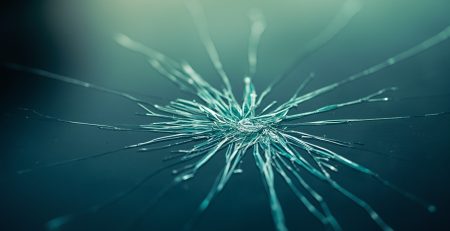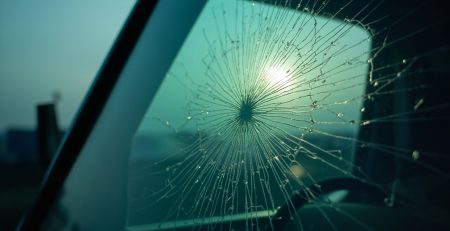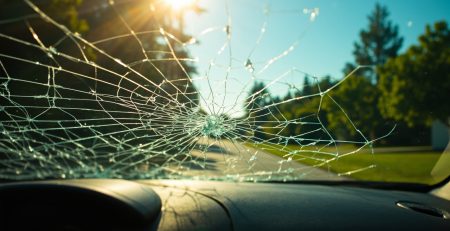Windshield Calibration A Complete Guide for Modern Drivers
Why a New Windshield is More Than Just Glass
When you get a new windshield, you’re likely focused on fixing a crack and ensuring a clear view of the road. But in modern vehicles, the windshield is far more than a simple barrier against the elements; it’s a critical component of your car’s nervous system. This is because of Advanced Driver-Assistance Systems (ADAS).
Many of these systems, which include features like automatic emergency braking, lane-keeping assist, and adaptive cruise control, rely on cameras and sensors mounted directly to the windshield. When the glass is replaced, the position of these sensors shifts. Even a single millimeter of difference can throw off the entire system’s calculations, much like a misaligned rifle scope will cause a shot to miss its target.
If these complex sensors aren’t perfectly aligned, they cannot function as designed, putting you, your passengers, and other drivers at risk. This is why professional ADAS calibration isn’t just a recommendation, it’s an essential safety procedure after every windshield replacement.
The Brains Behind Your Car’s Safety
You hear the term ADAS thrown around a lot, but what does it actually mean?
ADAS stands for Advanced Driver-Assistance Systems. Think of them as your car’s co-pilot, an extra set of eyes and reflexes working constantly to keep you safe.
These systems use a network of cameras, radar, and other sensors to perceive the world around your vehicle. They can detect other cars, read road signs, identify pedestrians, and measure your following distance. Based on this data, ADAS can provide warnings or even take direct action, like applying the brakes or making a slight steering correction to prevent an accident or reduce its severity.
Common ADAS features that rely on a windshield-mounted camera include:
- Forward Collision Warning
- Lane Departure Warning
- Automatic High-Beam Control
- Traffic Sign Recognition
Because the primary camera for these systems ‘sees’ through the windshield, its alignment is paramount to their function. Any change to the windshield requires a corresponding recalibration of the camera’s view.
Who Needs Windshield Calibration?
This is a common question, and the answer is simple: most modern drivers. If your vehicle was manufactured in the last decade, it almost certainly has ADAS features that require calibration after a windshield replacement. This technology is no longer exclusive to luxury brands.
Even many base model vehicles now come standard with safety systems that depend on precise sensor data. If your car has any of the following, it will need a calibration:
- Automatic Emergency Braking (AEB)
- Lane Keep Assist (LKA) or Lane Departure Warning (LDW)
- Adaptive Cruise Control (ACC)
- Automatic High Beams
- Traffic Sign Recognition
- Head-Up Display (HUD)
The safest approach is to assume your vehicle needs calibration. You can confirm by checking your owner’s manual or, even better, consulting with a qualified auto glass technician who can identify your car’s specific systems.
Static vs. Dynamic ADAS Calibration Process
When we calibrate an ADAS system, it’s not a one-size-fits-all procedure. The correct method is dictated by the vehicle manufacturer and can involve one of two primary approaches: static or dynamic calibration.
Static Calibration
Static calibration is performed in a controlled workshop environment. The vehicle is parked on a perfectly level surface and positioned in front of a specially designed target board with specific patterns. Our technicians connect a diagnostic tool to the car’s computer and initiate the calibration process. The vehicle’s ADAS camera ‘looks’ at the target, using it as a fixed reference point to precisely align its field of view. This highly accurate method establishes a perfect baseline for the system, essentially teaching it where ‘straight ahead’ is.
Dynamic Calibration
As the name implies, dynamic calibration is performed while the vehicle is in motion. A technician takes the car for a drive on clearly marked roads, following a procedure specified by the manufacturer. This often involves driving at a set speed for a certain distance. During the drive, the ADAS camera uses real-world inputs like lane markings to learn and adjust its parameters on the fly.
Some vehicles require only static or dynamic calibration, while others need a combination of both to ensure all systems are functioning perfectly.

The High Stakes of Skipping Calibration
Tempted to save time and skip the calibration step? It’s a risk not worth taking. Driving with an uncalibrated ADAS system can have serious consequences and leaves critical safety features compromised.
- System Malfunctions: An uncalibrated camera can cause systems to fail or, worse, act erratically. Your automatic emergency braking might not detect a stopped car ahead, or it could trigger for no reason, causing a sudden stop that could lead to a rear-end collision.
- Unreliable Warnings: Your Lane Departure Warning might fail to alert you as you drift, or it could incorrectly try to ‘correct’ your steering when you are perfectly centered in your lane.
- Compromised Safety: Ultimately, skipping calibration means your vehicle no longer meets the safety standards it was designed to achieve. You are driving with a disabled or unpredictable safety net.
- Insurance and Liability Concerns: In the event of an accident, an investigation could reveal that required safety procedures like calibration were ignored, potentially impacting your insurance claim or liability.
Choosing the Right Calibration Service
This is a critical point: not every auto glass shop is equipped to perform ADAS calibration. This highly technical task requires a significant investment in specialized tools, software, and ongoing technician training.
To perform a calibration correctly, a shop must have:
- Manufacturer-Specific Equipment: Generic tools are not enough. A professional shop uses diagnostic scanners and targeting systems designed to communicate with your vehicle’s specific ADAS modules.
- Trained Technicians: Our technicians are experts in both glass installation and the complex electronic systems behind it. They understand the unique calibration requirements for different makes and models.
- A Controlled Environment: For static calibration, a perfectly level floor and proper lighting are non-negotiable for achieving an accurate result.
- Access to OEM Data: Manufacturers constantly update procedures. A reputable shop has access to the latest OEM (Original Equipment Manufacturer) data to ensure the job is done right.
You wouldn’t trust an unqualified mechanic with your engine and the same logic applies to your car’s advanced safety systems.

How Long Does Windshield Calibration Take?
The time required for calibration can vary. The process itself, whether static or dynamic, can take anywhere from 30 minutes to two hours. This depends on the vehicle’s make and model and the specific type of calibration required.
However, it’s important to account for the entire process, which includes vehicle prep, diagnostic scans before and after, and the calibration drive itself if dynamic calibration is needed. While it adds a bit of time to your service appointment, it is a crucial investment in your vehicle’s safety and proper functionality.
The Uni Auto Glass Houston Difference
At Uni Auto Glass Houston, we treat ADAS calibration with the seriousness it deserves. We have invested heavily in the state-of-the-art equipment and continuous training necessary to be leaders in this field. When you bring your vehicle to us, we don’t just replace the glass, we restore its entire safety system.
We perform thorough pre- and post-service diagnostic scans to ensure every ADAS feature is functioning correctly. We use manufacturer-approved tools and follow OEM procedures to the letter, guaranteeing your vehicle is recalibrated to the exact standards it was built to. This commitment to precision and safety is what sets us apart and provides you with total peace of mind.
Your Next Step to a Safer Drive
Your vehicle’s windshield is a key component in a sophisticated safety network. Ensuring it is properly installed and calibrated is not an option, it’s a necessity for safe driving in the modern world.
Don’t compromise on the safety of your vehicle. If you’re in the Houston area and need a windshield replacement, trust the experts who understand the technology.
Reach out to Uni Auto Glass Houston today. We are here to answer your questions and provide the professional, precise calibration service your vehicle needs to keep you safe on the road.












